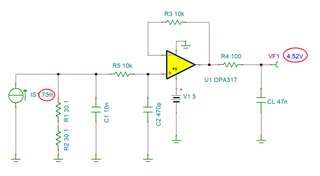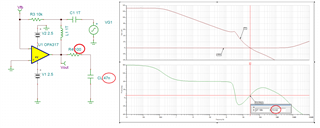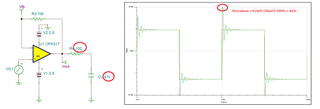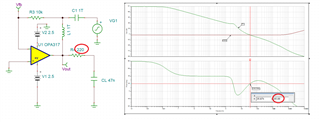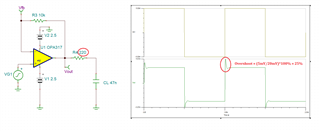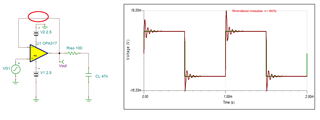Other Parts Discussed in Thread: OPA317, TINA-TI
Hello TI,
We are using a current source to test a current sense circuit. The given input DC current range is 1mA to 75mA.
We are facing a voltage drop across R3 ranging from 3mV to 20mV as we increase the input current. Even if we depopulate D1 BAS40 diode.
We would like to know if this is normal and why it is happening through the Opamp? Attaching the circuit below.

regards,


